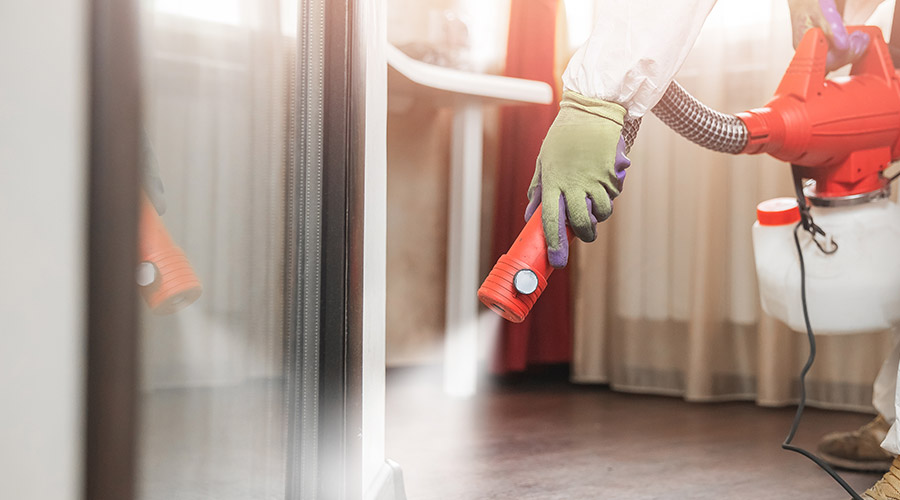As patient fears of hospital infections and superbugs continue to rise, one hospital in Norfolk, Va. is taking a unique approach to battling these issues – copper. Sentara Healthcare will open a new 129-bed patient tower at its Sentara Leigh Hospital site, where the patient rooms and most clinical spaces have been outfitted with antimicrobial copper-infused surfaces, including countertops, over-the-bed tables and bed rails. In early 2014, Sentara will add antimicrobial copper-infused textiles, ranging from bed linens to patients gowns, throughout the entire East Tower.
The use of the copper-infused surfaces and textiles will be part of an evaluation to determine whether they decrease the development of infections, and thus the need for antibiotics prescribed as a result of hospital-acquired infections. It will be the world's largest-known study to date of durable, biologically active antimicrobial surfaces, which is expected to begin in the first quarter of 2014.
The secret ingredient to these materials is a copper technology developed by Richmond, Va.-based Cupron, a biotechnology company that has found ways to isolate copper so that it can be stabilized and imbedded in a variety of materials to take advantage of its natural antimicrobial properties. Cupron partnered with EOS Surfaces in Norfolk, Va., to develop Antimicrobial Cupron Enhanced EOS Surfaces, which have been approved by the EPA for their ability to kill greater than 99.9 percent of Gram negative and Gram positive bacteria* within two hours of exposure. It is the only copper-infused antimicrobial surface with this EPA-approved public health claim.
“Sentara is pleased to become the first large-scale deployment of these advanced antimicrobial materials,” says Dr. Gene Burke, vice president of clinical effectiveness for Sentara. “Over the years, Sentara has implemented many advanced practices in an effort to minimize hospital-acquired infections at our facilities and we believe that new technologies, such as the copper-infused materials, have the potential to create another layer of protection in this very important effort.”
“After spending two years developing Antimicrobial Cupron Enhanced EOS Surfaces and most of the past 18 months expanding our manufacturing capabilities, the opening of Sentara’s Leigh East Tower and the launch of the world’s largest study of antimicrobial materials is a pivotal moment for EOS Surfaces,” says Ken Trinder, CEO of EOS Surfaces. “We expect the study to validate what our EPA registration and testing has already affirmed: that Cupron Enhanced EOS Surfaces can play a significant role in hospitals’ efforts to reduce HAIs.”
“HAIs are a complex problem that will require new technologies and healthcare products working together to continue the journey to zero-infection environments,” says Paul Rocheleau, chairman of Cupron. “But what our Cupron-enhanced materials do is provide hospitals with another layer of protection that is constantly working in the background, to complement their existing infection control practices. We look forward to ‘Cupronizing’ more hospitals in the future like we’ve done with Sentara.”
The use of Antimicrobial Cupron Enhanced EOS Surfaces is a supplement to and not a substitute for standard infection control practices; users must continue to follow all current infection control practices, including those practices related to cleaning and disinfection of environmental surfaces. Antimicrobial Cupron Enhanced EOS Surfaces have been shown to reduce microbial contamination but they do not necessarily prevent cross contamination.
Sentara has received national recognition in recent years for its efforts to improve patient care and reduce infections. National quality leaders such as VHA have blueprinted Sentara practices at reducing, and in some cases, eliminating ventilator-associated pneumonia. In addition, Sentara hospitals have been recognized for work in its ICUs to reduce central line blood stream infections and urinary tract infections.
*Testing demonstrates effective antibacterial activity against Staphylococcus aureus (ATCC 6538), Enterobacter aerogenes (ATCC 13048), Methicillin resistant Staphylococcus aureus (MRSA-ATCC 33592), Escherichia coli O157:H7 (ATCC 35150) and Pseudomonas aeruginosa (ATCC 15442).

 The Top States for Pest Infestations
The Top States for Pest Infestations Ground Broken on Wichita Biomedical Campus Project
Ground Broken on Wichita Biomedical Campus Project Aligning Construction and Facility Activities to Minimize Problems
Aligning Construction and Facility Activities to Minimize Problems Cooper University Health Care Breaks Ground on 'Project Imagine'
Cooper University Health Care Breaks Ground on 'Project Imagine' 3 Employees Injured by Patient at Halifax Infirmary's Emergency Department
3 Employees Injured by Patient at Halifax Infirmary's Emergency Department